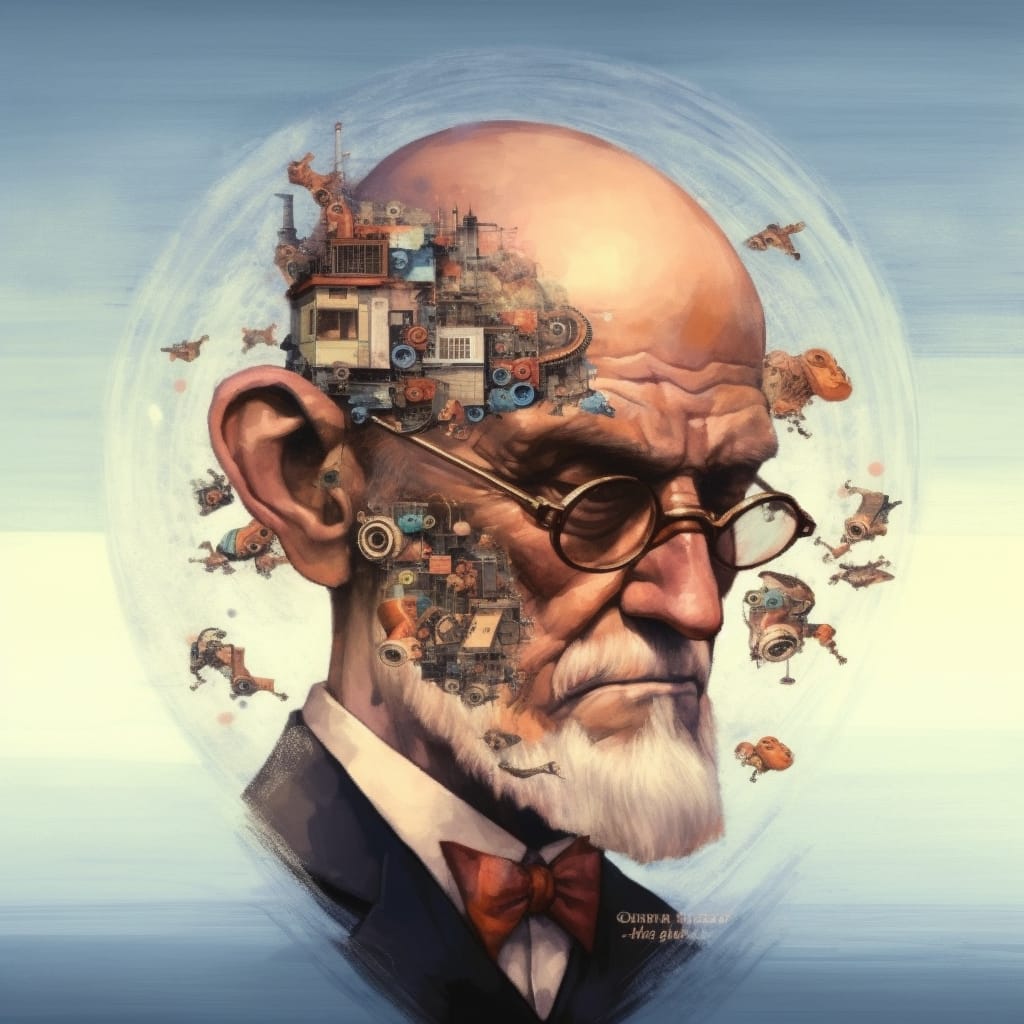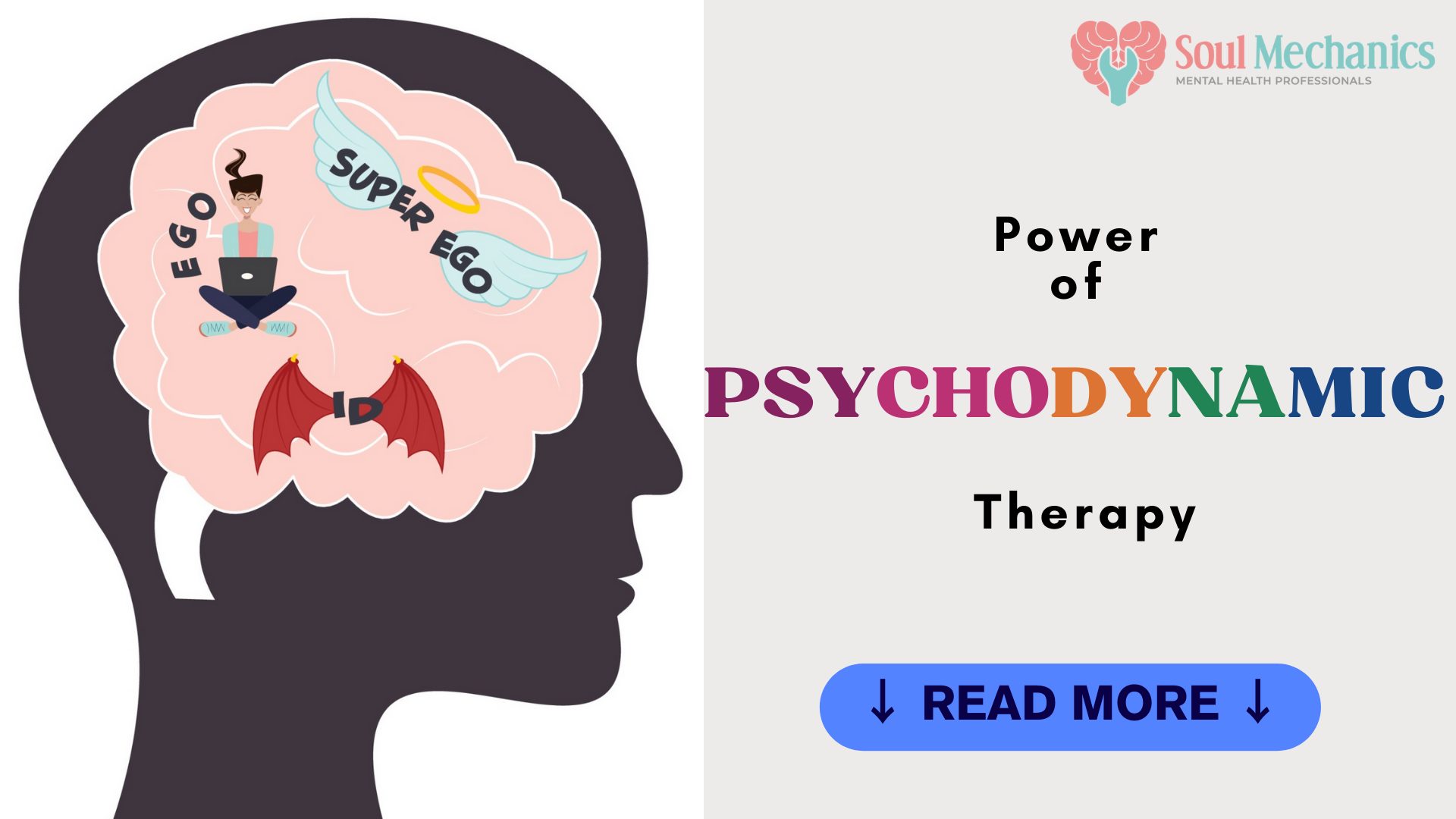Psychodynamic Therapy
Psychodynamic Therapy
Psychodynamic Psychotherapy; was developed by famous psychologist Sigmund Freud who is also known as the Father of Psychoanalysis. Psychodynamic Psychotherapy falls under the wing of psychotherapy. It focuses on exploring what lies behind the unconscious mind and understanding how it plays a role in our emotions, thoughts, and behaviours. This approach is also developed in the belief that our unconscious desires, childhood experiences, and other unresolved issues could lead us to experience distress and may hinder our personal development. By uncovering the hidden and working on it, we can move towards a more fulfilled life and embark on our healing journey.
This approach is often utilized in the therapeutic process of various mental health concerns, such as anxiety, depression, interpersonal issues, personality disorders, etc. Psychodynamic Psychotherapy is often conducted in a one-to-one session by a trained and certified therapist utilizing various techniques, such as free association, dream analysis, exploring the unconscious, etc. We will dive more into the techniques in the later part of the article.

Core Concepts in Psychodynamic
1. Unconscious Drives.
This concept emphasizes the idea that most of our feelings, thoughts, and motivations are unconscious. Most of the time, we are not fully aware of them. Through Psychodynamic Therapy, we can gradually bring the unconscious to the consciousness with the assistance of a trained therapist, leading us to enhance our personal growth and healing
2. Childhood Influences.
Certain childhood experiences, especially the relationship we shared with our parents from the initial stage of our life can influence our emotional well-being and personality. Psychodynamic Therapy can assist us in uncovering the unresolved issues from our childhood and work towards healing childhood pain by breaking unhealthy patterns that we carry from our past,
3. Defense Mechanisms/Resistances.
We often hide our issues or pain behind certain defence mechanisms (denial, repression, projection) or resistances that help us to protect ourselves from uncomfortable emotions or thoughts. Psychodynamic Therapists often guide us to uncover our hidden pain or break the resistances that we use to block pain and regulate it with healthier ways instead of defences.
4. Transference.
Transference is one of the important Psychodynamic Therapy concepts. It usually occurs when we unconsciously project our emotions and feelings from past relationships onto others in our current life or onto our therapist. Examining and working on transference can be a useful tool for self-discovery.
5. Self-awareness.
The heart of Psychodynamic Therapy is to guide us to obtain more insights into our unconsciousness and bring it to light. By doing so, we can achieve an enhanced understanding of ourselves, leading towards improved emotional regulations, relationships, and healing.
ID, EGO & SUPEREGO
The different aspects of our mind and their function at different conscious levels are categorized as Id, Ego, and Superego. These three elements often influence our emotions, thoughts, and behaviours. It often leads to mental health distress or difficulty making decisions when there is a conflict between these three elements.
1. ID.
All our basic needs and desires are represented through the id; the most primitive and unconscious part of our mind. Id often operates with holding a principle of pleasure, whereby it seeks immediate gratification of our needs and desires without taking into account the possible consequences. It can also be considered as impulsive, representing our primal drives, and entirely lying in our unconsciousness.
2. SUPEREGO.
Our internalized moral sense or social conscience is represented by the superego, such as the guidelines of do’s and don'ts we grow up with. The superego acts as our conscience, navigating us with a sense of right and wrong, also known as our “moral compass”. It often strives towards perfection and judges the actions of our ego on a moral principles basis.
3. EGO.
The mediator between id and superego is represented by our ego which is the conscious and rational component of our mind. It navigates on a reality principle basis, in which it mediates between our desires of the id and the constraints in the external world. In short, the ego tries to explore socially acceptable and practical ways to satisfy our desires of the id by taking into account the possible consequences of the actions taken. It strives to balance the demands of the id with the moral ethics of the superego.

Levels Of Mind
Just like the three driving forces (id, ego & superego), our mind is also categorized into three levels of consciousness; conscious mind, preconscious mind, and unconscious (subconscious) mind.
1. Conscious Mind.
The tip of the iceberg; is the conscious mind. It encompasses of our thoughts, feelings, and experiences that we are aware of. It also includes our internal dialogues, sensations we perceive, planning, active thoughts, etc.
2. Preconscious Mind.
Slightly below the tip of the iceberg; the preconscious mind. It encompasses our memories, thoughts, and feelings that are not really in the conscious awareness but can quickly be accessed and brought back into consciousness. This includes the name of someone quite familiar, childhood fragrance, old funny memories, etc.
3. Unconscious (Subconscious) Mind.
Deeper below the tip of the iceberg; the unconscious (subconscious) mind. It encompasses memories, feelings, desires, and thoughts that are far below our immediate awareness. This often influences our personality, behaviors, thoughts, and emotions although we are not consciously aware of its existence. This includes our traumatic and emotionally painful life experiences.

Techniques of Psychodynamic Therapy
There are several other techniques apart from the above-discussed concepts (exploration of past/childhood, transference analysis, defence/resistance analysis, self-awareness) that are often utilized by a therapist during Psychodynamic Therapy sessions.
1. Free Association.
Free Association is a technique whereby the client is given a safe space to express their feelings, thoughts, and experiences openly without any fear or censorship. This gradually allows the client’s conscious emotions and thoughts to swim towards the surface. The therapist often listens attentively and discovers the client’s patterns or uncovers their hidden layers through this technique.
2. Dream Analysis.
Sometimes dreams can tell more about our unconscious mind. Through dream analysis, the therapist assists the client in interpreting their dreams in terms of themes and symbols that may bring further insights into the client’s inner world.
3. Interpretation.
In this technique, along with the therapist's assistance, the client learns to interpret their emotions, thoughts, and behaviours. This leads towards a better understanding of the underlying meaning of certain experiences, patterns, reactions, emotions, and many more.
4. Working Through.
This technique is often utilized by therapists to assist clients to discover and process their unresolved emotions. It could be from their childhood or during other life transitions. Working together on these issues promotes emotional growth and a sense of comfort.
5. Self-Reflections.
In Psychodynamic Therapy, clients are encouraged to constantly involve themselves in self-reflection. This can be done through journaling, talking to someone, meditation, mindfulness practices, etc. It helps clients to be more aware of their everyday life emotions and thoughts, leading towards better self-understanding.
Conclusion
In short, Psychodynamic Therapy is a unique form of psychotherapy that helps us acknowledge and understand the mental health concerns within ourselves. Although Psychodynamic Therapy can be time-consuming, it creates a profound, longer-lasting change within us. Oftentimes, since Psychodynamic Therapy can be lengthy and focuses more on the past (unconsciousness). It has also been integrated with other approaches and techniques by many mental health practitioners. This also helps the therapist to construct a more personalized therapy approach based on the client’s issues and needs.
It is important to remember that exploring deep emotions can be intense for those who are not prepared to face such emotions. Nevertheless, Psychodynamic Therapy continues to navigate one to empower one's personal growth by uncovering and resolving the unconscious, facilitating self-awareness and healing.
“Behind the unconscious often lies the demons that we are busy hiding from.”
Another interesting approach in therapy will be Acceptance and Commitment Therapy (ACT), you can read more about it here.
For more content related to mental health do follow us on our official Instagram.


